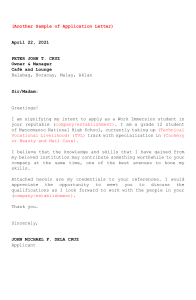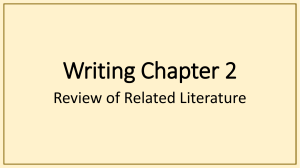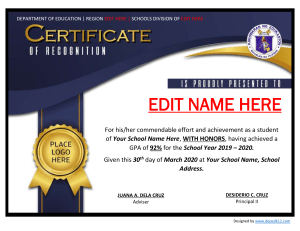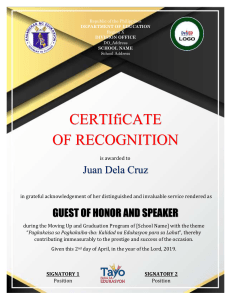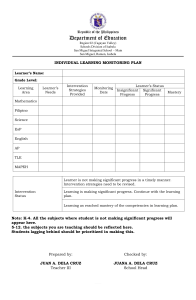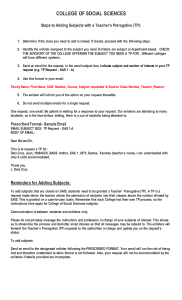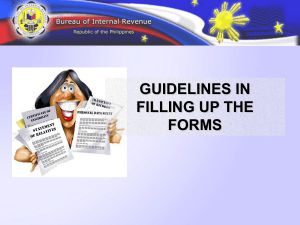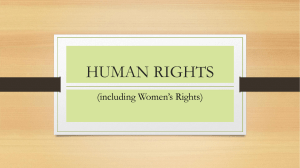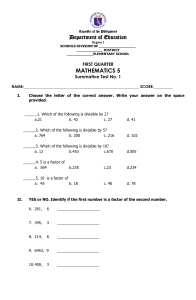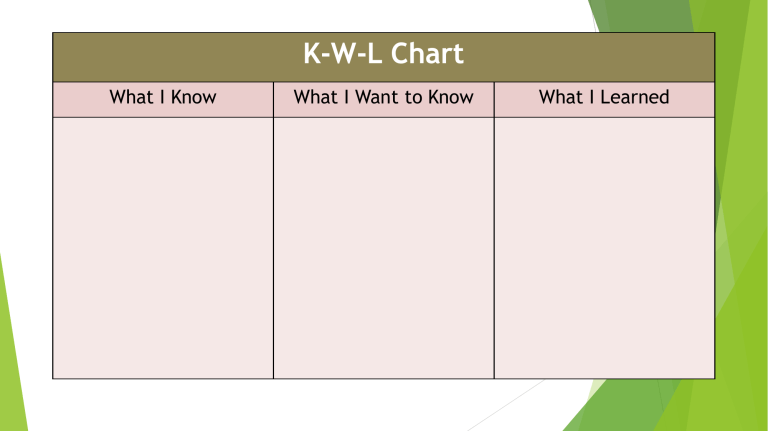
K-W-L Chart What I Know What I Want to Know What I Learned INTRODUCTION TO ACCOUNTING Chapter 1 CHAPTER OBJECTIVES You should be able to… Define accounting. Describe the nature of accounting. Explain the functions of accounting as a business. Narrate the history or origin of accounting. ACCOUNTING IS THE “LANGUAGE OF BUSINESS.” Situation: Mr. Dela Cruz started a printing business. He started with P100,000.00 of his personal money to start the business. After a month, Mr. Dela Cruz wants to know how much the business made and if the money invested is still there. Unfortunately, Mr. Dela Cruz was not able to organize his transactions and some receipts are lost. He is at a loss on the current financial condition and the income of the business. THIS IS WHERE ACCOUNTING COMES IN! Continuation: Mr. Dela Cruz started a printing business. He started with P100,000.00 of his personal money to start the business. After a month, Mr. Dela Cruz wants to know how much the business made and if the money invested is still there. Mr. Dela Cruz was able to keep track of the transactions of his business for the month. From his capital of P100,000, P50,000 was used to buy computer and printer for the business, P 5,000 for paying the bills and P15,000 for the rent. Easily the balance of cash left will be P 30,000. If there is a collection of P50,000 from customers, then the balance of cash would be P80,000. SEE THE DIFFERENCE! WHAT IS ACCOUNTING? - It is the art of recording, classifying, and summarizing in a significant manner and in terms of money, transactions and events which are, in part of at least of financial character, and interpreting the results thereof. (American Institute of Certified Public Accountants or AICPA) - It is the process of classifying, measuring and communicating economic information to permit informed judgment and decision by users of the information. (American Accounting Association or AAA) WHAT IS ACCOUNTING? - It is a service activity. Its function is to provide quantitative information primarily financial in nature, about economic entities that is intended to be useful in making economic decisions. (Accounting Standards Council’s Statement of Financial Accounting Standards No. 1) IS ACCOUNTING AN ART OR A SCIENCE? Nature of Accounting Accounting is an art. Accounting is a process. Accounting is a means and not an end. Accounting deals with financial information and transactions. Accounting is an information system. Functions of Accounting in Business It is a discipline, with techniques all measurable transactions in terms of money or money’s worth are recorded, classified and summarized in a proper and systematic way. It helps to present and explain status of financial position and income-loss of a particular period and helps management & investors to be provided with necessary information and statements. Functions of Accounting in Business It is an aid to management. It is a system that keeps a record of financial events and analyzes them for presenting reports of the financial result and position of an economic activity. This process gives management body the information necessary for taking a decision. This information is needed for the interested parties, inside or outside of the organization. History of Accounting: Prehistory: Sticks, stones, bones, leaves, etc. Cave paintings in Europe Ancient History: Mesopotamia (8500 BC) – clay tokens, (disks, spheres, pellets) Bullae - the first bill of lading Clay tablets Egypt, China, Babylon, Greece, Roman Empire History of Accounting: Middle Ages 13th to 15th century – Merchants and bankers of Florence, Venice and Genoa (cities in modern day Italy) 1340 AD – Double entry records first appeared in Genoa Fra Luca Pacioli – Father of Accounting - Wrote the treatise “Everything about Arithmetic, Geometry, Proportions, and Proportionality” 1494 in Venice. “Summa de Arithmetica, Geometria, Proportioni et Proportionalita” History of Accounting: Modern Times Industrial Revolution (mid 18th century – mid 19th century) – from handicrafts to mass produced goods. It ushered problem of costing large volume of machine made products. Cost Accounting emerged. The growth of corporations Corporate owners (stockholders) – were no longer managers of the business. Information age – development of accounting standards and accounting systems. K-W-L Chart What I Know What I Want to Know What I Learned THANK YOU VERY MUCH!
